This article relies largely or entirely on a single source .(January 2017) |
Ballistite is a smokeless propellant made from two high explosives, nitrocellulose and nitroglycerine. It was developed and patented by Alfred Nobel in the late 19th century.
This article relies largely or entirely on a single source .(January 2017) |
Ballistite is a smokeless propellant made from two high explosives, nitrocellulose and nitroglycerine. It was developed and patented by Alfred Nobel in the late 19th century.
Alfred Nobel patented[ citation needed ] [1] Ballistite in 1887 while he was living in Paris. His formulation was composed of 10% camphor and equal parts nitroglycerine and collodion. [2] The camphor reacted with any acidic products of the chemical breakdown of the two explosives. This both stabilized the explosive against further decomposition and prevented spontaneous explosions. However, camphor tends to evaporate over time, leaving a potentially unstable mixture. [3]
Nobel's patent specified that the nitrocellulose should be "of the well-known soluble kind". He offered to sell the rights of the new explosive to the French government, but they declined. Modern research shows that Vieille already discovered it in 1884-1885, about the same time as his Poudre B, and noted its high flame temperatures leading to bore erosion, which led French military to conclude it's unsuitable for military use (indeed, it was a problem for all the militaries which tried to use double- base propellants later). [4] Nobel subsequently licensed the rights to the Italian government, which entered into a contract on 1 August 1889 to obtain 300,000 kg (660,000 lb) of Ballistite; and Nobel opened a factory at Avigliana, Turin. [5]
The Italian Army swiftly replaced their M1870 and M1870/87 rifles, which used black powder cartridges, by the new M1890 Vetterli, which used ballistite cartridges. As Italy was a competing great power to France, this was not received well by the French press and the public. The newspapers accused Nobel of industrial espionage, by spying on Paul Vieille (the inventor of Poudre B), and "high treason against France". Following a police investigation, he was refused permission to conduct any more research, or to manufacture explosives in France. He therefore moved to San Remo in Italy, in 1891, where he spent the last five years of his life. [6]
Rifle grenades such as the ENERGA [7] and Spigot mortar rounds used in the PIAT [8] used Ballistite. [9] [10] [11]
Ballistite is still manufactured as a solid fuel rocket propellant, although the less volatile but chemically similar diphenylamine is used instead of camphor. [12]
Meanwhile, a government committee in Great Britain, called the "Explosives Committee" and chaired by Sir Frederick Abel, monitored foreign developments in explosives. Abel and Sir James Dewar, who was also on the committee, jointly patented a modified form of ballistite in 1889. This consisted of 58% nitroglycerin by weight, 37% guncotton and 5% petroleum jelly. Using acetone as a solvent, it was extruded as spaghetti-like rods initially called "cord powder" or "the committee's modification of ballistite", but this was soon abbreviated to cordite.
After unsuccessful negotiations, in 1893, Nobel sued Abel and Dewar over patent infringement and lost the case. [13] It then went to the Court of Appeal and the House of Lords in 1895 where he also lost the two appeals and the Nobel's Explosives Company had to pay the costs. [13] The claim was lost because the words "of the well-known soluble kind" in his patent were taken to mean soluble collodion, and to specifically exclude the ether-alcohol-insoluble guncotton. [13]

Alfred Bernhard Nobel was a Swedish chemist, inventor, engineer and businessman. He is known for inventing dynamite as well as having bequeathed his fortune to establish the Nobel Prize. He also made several important contributions to science, holding 355 patents in his lifetime. Nobel's most famous invention was dynamite, an explosive using nitroglycerin; it was patented in 1867.

Dynamite is an explosive made of nitroglycerin, sorbents, and stabilizers. It was invented by the Swedish chemist and engineer Alfred Nobel in Geesthacht, Northern Germany, and was patented in 1867. It rapidly gained wide-scale use as a more robust alternative to the traditional black powder explosives. It allows the use of nitroglycerine's favorable explosive properties while greatly reducing its risk of accidental detonation.

Sir Frederick Augustus Abel, 1st Baronet was an English chemist who was recognised as the leading British authority on explosives. He is best known for the invention of cordite as a replacement for gunpowder in firearms.

Nitroglycerin (NG), also known as trinitroglycerin (TNG), nitro, glyceryl trinitrate (GTN), or 1,2,3-trinitroxypropane, is a dense, colorless, oily, explosive liquid most commonly produced by nitrating glycerol with white fuming nitric acid under conditions appropriate to the formation of the nitric acid ester. Chemically, the substance is an organic nitrate compound rather than a nitro compound, but the traditional name is retained. Discovered in 1847 by Ascanio Sobrero, nitroglycerin has been used as an active ingredient in the manufacture of explosives, namely dynamite, and as such it is employed in the construction, demolition, and mining industries. It is combined with nitrocellulose to form double-based smokeless powder, which has been used as a propellant in artillery and firearms since the 1880s.

Cordite is a family of smokeless propellants developed and produced in Britain since 1889 to replace black powder as a military firearm propellant. Like modern gunpowder, cordite is classified as a low explosive because of its slow burning rates and consequently low brisance. These produce a subsonic deflagration wave rather than the supersonic detonation wave produced by brisants, or high explosives. The hot gases produced by burning gunpowder or cordite generate sufficient pressure to propel a bullet or shell to its target, but not so quickly as to routinely destroy the barrel of the gun.
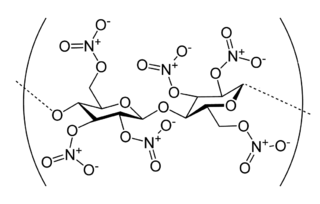
Nitrocellulose is a highly flammable compound formed by nitrating cellulose through exposure to a mixture of nitric acid and sulfuric acid. One of its first major uses was as guncotton, a replacement for gunpowder as propellant in firearms. It was also used to replace gunpowder as a low-order explosive in mining and other applications. In the form of collodion it was also a critical component in an early photographic emulsion, the use of which revolutionized photography in the 1860s.
Celluloids are a class of materials produced by mixing nitrocellulose and camphor, often with added dyes and other agents. Once much more common for its use as photographic film before the advent of safer methods, celluloid's common contemporary uses are for manufacturing table tennis balls, musical instruments, combs, office equipment, fountain pen bodies, and guitar picks.
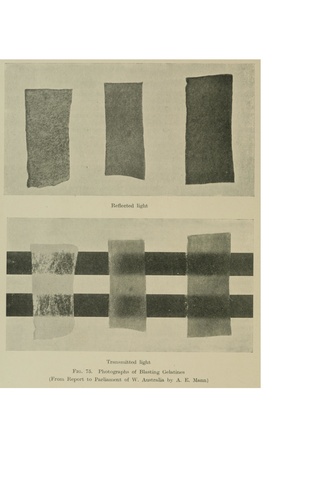
Gelignite, also known as blasting gelatin or simply "jelly", is an explosive material consisting of collodion-cotton dissolved in either nitroglycerine or nitroglycol and mixed with wood pulp and saltpetre.
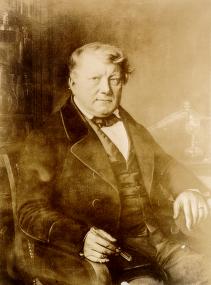
Christian Friedrich Schönbein HFRSE was a German-Swiss chemist who is best known for inventing the fuel cell (1838) at the same time as William Robert Grove and his discoveries of guncotton and ozone.

A shell, in a military context, is a projectile whose payload contains an explosive, incendiary, or other chemical filling. Originally it was called a bombshell, but "shell" has come to be unambiguous in a military context. A shell can hold a tracer.
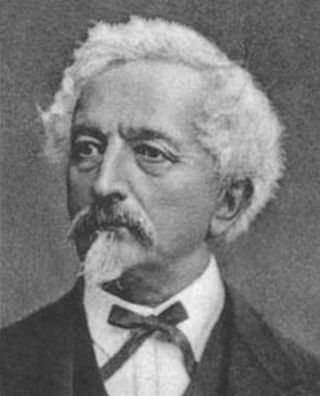
Ascanio Sobrero was an Italian chemist, born in Casale Monferrato. He studied under Théophile-Jules Pelouze at the University of Turin, who had worked with the explosive material guncotton.

Smokeless powder, also referred to as gunpowder, is a type of propellant used in firearms and artillery that produces less smoke and less fouling when fired compared to black powder. The combustion products are mainly gaseous, compared to around 55% solid products for black powder. In addition, smokeless powder does not leave the thick, heavy fouling of hygroscopic material associated with black powder that causes rusting of the barrel.

The .303 British or 7.7×56mmR, is a .303-inch (7.7 mm) calibre rimmed rifle cartridge. The .303 inch bore diameter is measured between rifling lands as is the common practice in Europe which follows the traditional black powder convention.
Poudre B was the first practical smokeless gunpowder created in 1884. It was perfected between 1882 and 1884 at "Laboratoire Central des Poudres et Salpêtres" in Paris, France. Originally called "Poudre V" from the name of the inventor, Paul Vieille, it was arbitrarily renamed "Poudre B" to distract German espionage. "Poudre B" is made from 68.2% insoluble nitrocellulose, 29.8% soluble nitrocellulose gelatinized with ether and 2% paraffin. "Poudre B" is made up of very small paper-thin flakes that are not white but dark greenish grey in colour. "Poudre B" was first used to load the 8mm Lebel cartridges issued in 1886 for the Lebel rifle.
Brown powder or prismatic powder, sometimes referred as "cocoa powder" due to its color, was a propellant used in large artillery and ship's guns from the 1870s to the 1890s. While similar to black powder, it was chemically formulated and formed hydraulically into a specific grain shape to provide slower burn rates with neutral or progressive burning, as opposed to the faster and regressive burn typical of randomly shaped grains of black powder produced by crushing and screening powder formed into sheets in a press box, as was typical for cannon powder previously.
Nobel Enterprises is a chemicals business that used to be based at Ardeer, in the Ayrshire town of Stevenston, in Scotland. Specialising in nitrogen-based propellants and explosives and nitrocellulose-based products such as varnishes and inks. It was formerly ICI Nobel, a division of the chemicals group ICI, but was then sold to Inabata, a Japanese trading firm. The business was sold on to Chemring Group in 2005 and is now a Scottish Company, part of Chemring Group. Stefan Donald is currently the lead engineer for the ongoing regeneration project.

The High Velocity Aircraft Rocket, or HVAR, also known by the nickname Holy Moses, was an American unguided rocket developed during World War II to attack targets on the ground from aircraft. It saw extensive use during both World War II and the Korean War.
Ball propellant is a form of nitrocellulose used in small arms cartridges. Ball propellant can be manufactured more rapidly with greater safety and less expense than extruded propellants.

The Stowmarket Guncotton Explosion happened on 11 August 1871 at the Prentices Guncotton Factory in Stowmarket, Suffolk. It was blown up by two massive explosions, that occurred within the factory, killing 28 people and injuring approximately 70 others.
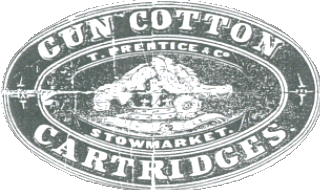
The Stowmarket Guncotton Company was an explosives company established in the 19th century by Messrs Prentice that operated a gun-cotton factory in Stowmarket, Suffolk, England. The factory was the scene of an explosion in 1871 that claimed the lives of 28 people.